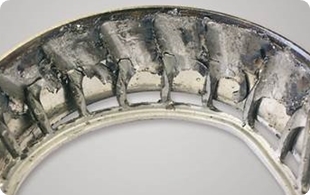
In drives for mobile equipment, high speed tapered roller bearings from the input shaft failed due to cage fracture. The root cause was identified as an insufficient quantity of oil which led to overheating, subsequent wear, increased forces between rollers and the cage and, finally, cage collapse.
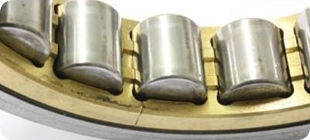
Cylindrical roller bearing failures due to cage fracture were observed in numerous wheelset gearboxes. Our investigations detected vibrations during operation that exceeded the cage strength as defined by its geometry and material.
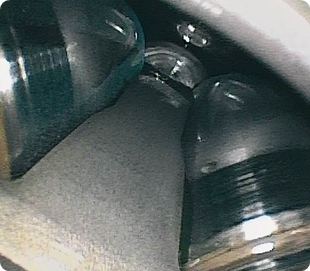
An endoscopic inspection of a large industrial gearbox was arranged due to conspicuous noise during operation. The inspection showed wear on the rollers. The cause was identified as poor lubrication during a subsequent visual inspection.
Following the inspection, the replacement of the affected spherical roller bearing and repair of the gearbox can be planned while taking operational needs into account and minimizing the costs due to the loss of production.
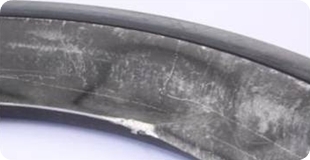
A planetary gear bearing failed due to shoulder fracture of the inner ring in the gearbox of a wind energy converter. In this case, metallographic investigations detected a fault during heat treatment that caused severe local brittleness.
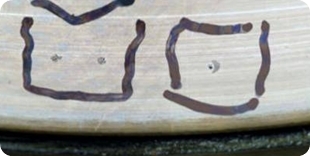
Unexpected bearing fatigue was observed in several industrial plants. Our investigations determined the source to be an electrical discharge that could be traced back to defective insulation.
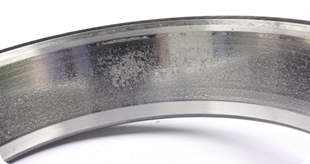
Poor lubrication lead to a typical wear pattern on the gears and bearings and, finally, to bearing failure in an industrial gearbox.
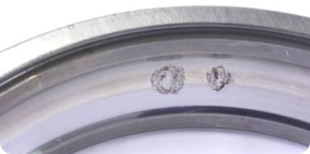
Pitting was found in the rotor ball bearings of several electric drives emitting conspicuous amounts of noise. The root cause was determined to be excessive tension in the housing caused by improper mounting of the bearings. This lead to increased loads in the bearings, which caused higher temperatures and significantly reduced their lifetime.
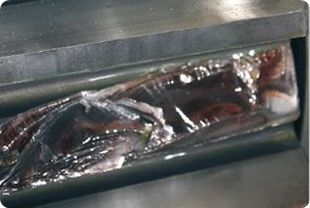
A tooth foot fracture in a large industrial gearbox was detected in the final stage. The root cause was an improper contact pattern, which could itself be traced back to deflections in the housing. In addition to visual inspection, endoscopy and fracture face analysis, finite element simulation was used to determine the root cause.
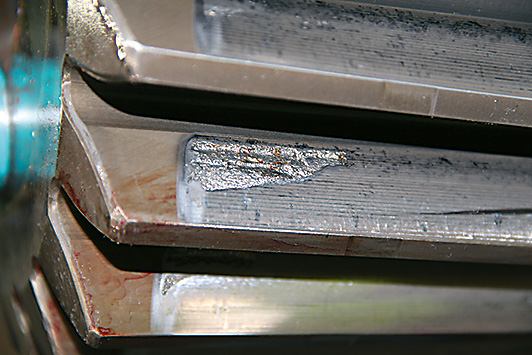
Pitting on the gear flanks was detected in the main drive of a wind energy converter gearbox. In addition to an improper contact pattern, an excessively large grain size in the material was detected which reduced the flank strength.
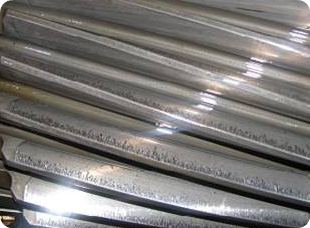
Skipping required maintenance led to a significant deterioration of oil quality in the gearboxes of several wind energy converters and thus to both worn gears and failed bearings.
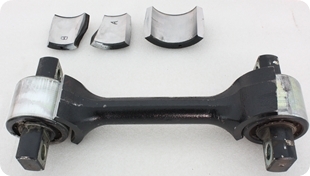
This fracture of a torque support rod from a wheelset gearbox was caused by extraordinary loads throughout the entire system.
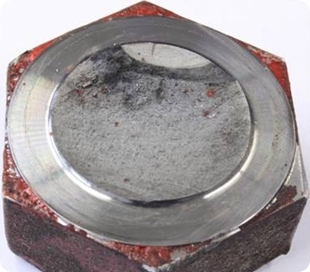
Several bolts broke beneath their heads due to fatigue. Based on the fracture faces, cyclic deformation of the connected parts was identified as the root cause.
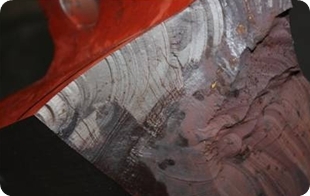
The rotor shaft of an electric multi-megawatt drive failed due to a fatigue fracture. Torsional vibrations based on the plant configuration were identified as the root cause.